Opera Explained: Voice Types
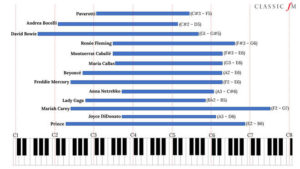
By Kelly Maxwell
One of the questions we get the most is “what is the difference between a soprano and a mezzo-soprano, exactly?” After a quick introduction to the seven main voice types, the 2019-20 Opera Colorado Artists in Residence will detail their favorite part about their voice type, the biggest misconception associated with their classification, as well as their dream roles and favorite arias. Scroll through for some expert-recommended listening!
THE BASICS:
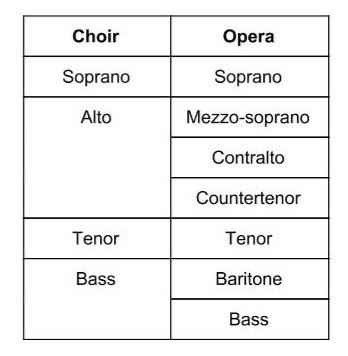
Operatic voice types are broken down into seven basic voice type classifications. The female voices are divided between sopranos, mezzo-sopranos, and contraltos. Sopranos are generally the highest voice type, followed by mezzo-sopranos and contraltos.
The male voices are divided between countertenors, tenors, baritones, bass-baritones, and basses. Just like contraltos, true countertenors are very rare. Tenors are typically the highest voice type, followed by baritones, bass-baritones, and basses. Basses and baritones can occasionally sing the same repertoire, as long as they have access to the corresponding part of their register.
Jump to each section:
TENOR | BARITONE | BASS-BARITONE | BASS
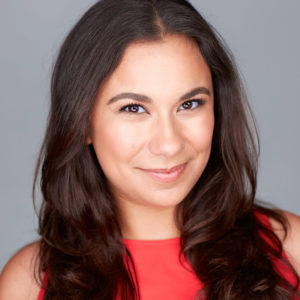 SOPRANO – Laura Soto-Bayomi
SOPRANO – Laura Soto-Bayomi
What is your favorite thing about being a soprano?
Being a soprano isn’t just about singing beautiful arias alone on stage. Some of my favorite moments in opera are the ensemble numbers and duets. Sopranos get to sing with everybody: sometimes you’re scheming with a mezzo or a baritone, having a spat with a bass, or, more often than not, singing a love duet with a tenor.
What is the biggest misconception about your voice type?
Ha! Either that sopranos can’t sing harmonies very well or that we all hate each other. Now, I can only speak from personal experience, but I’ve found both to be untrue (that isn’t to say that I’ve never made a musical error. However, it can be more obvious when a soprano makes a mistake, considering the part may be higher and more exposed to the audience’s ears. Also, to dispel that other myth — some of my closest friends are also sopranos.
What are your top three dream roles and top three arias for your voice type?
ROLES:
- Anne Trulove, The Rake’s Progress by Stravinsky
- Sophie, Der Rosenkavalier by Strauss
- Susanna, Le nozze di Figaro by Mozart
ARIAS:
- Sophie’s “The Presentation of the Rose” from Der Rosenkavalier by Strauss
- Violetta’s “Ah forse lui…Sempre libera” from La traviata by Verdi
- Tatyana’s, “Letter Scene” from Eugene Onegin by Tchaikovsky
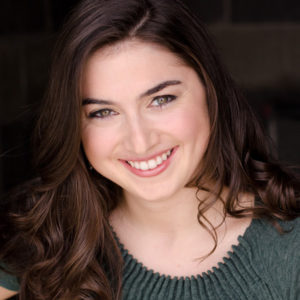 MEZZO-SOPRANO – Kira Dills-Desurra
MEZZO-SOPRANO – Kira Dills-Desurra
What is your favorite thing about being a mezzo-soprano?
I am sure it won’t shock anyone to know that one of my favorite things about being a mezzo-soprano is singing pants roles! That’s when a woman plays the character of a young man. For example, Hansel in Hansel and Gretel.
What is the biggest misconception about your voice type?
A common misconception about mezzo-sopranos is that we don’t have high notes. While our voices tend to sit a little lower — sometimes much lower — than our soprano sisters, we still sing quite high on a regular basis. One of my favorite arias/roles to sing is “Que fais-tu, blanche tourterelle,” Stephano’s aria from Romeo et Juliette by Gounod, which goes all the way up to a high C!
What are your top three dream roles and top three arias for your voice type?
ROLES:
- Cherubino, Le nozze di Figaro by Mozart
- Prince Orlofsky, Die Fledermaus, by Johann Stauss
- Composer, Ariandne auf Naxos by Richard Strauss
- Dorabella, Così fan tutte by Mozart (Just to throw a lady in there)
ARIAS:
- Stephano’s “Que fais-tu, blanche tourterelle?” from Roméo et Juliette by Gounod
- Dorabella’s “Smanie implacabili” from Così fan tutte by Mozart
- The Composer’s “Sein wir wieder gut!” from Ariadne auf Naxos by Strauss
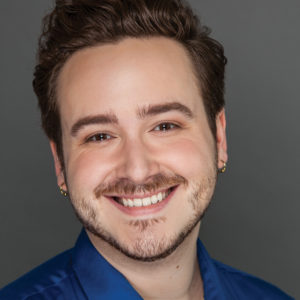 TENOR – Tom Cilluffo
TENOR – Tom Cilluffo
What is your favorite thing about being a tenor?
I think my favorite thing about being a tenor is that we get to sing a lot of the fun and popular repertoire that people recognize and enjoy.
What is the biggest misconception about your voice type?
The biggest misconception about tenors is that we are all egotistical divos. That’s not COMPLETELY true!
What are your top three dream roles and top three arias for your voice type?
ROLES:
- Tonio, La fille du régiment by Donizetti
- Edgardo, Lucia di Lammermoor by Donizetti
- Cavaradossi, Tosca by Puccini
ARIAS:
- Il Duca di Mantova’s “La donna è mobile” from Rigoletto by Verdi
- Canio’s “Vesti la giubba” from Pagliacci by Leoncavallo
- Calaf’s “Nessun dorma” from Turandot by Puccini (Marin Alsop of the Colorado Symphony and an OC Alum conducting!)
 BARITONE – Isaiah Fenken
BARITONE – Isaiah Fenken
What is your favorite thing about being a baritone?
My favorite part about being a baritone is getting the chance to take on so many different kinds of characters. While baritones definitely play the role of boastful soldier, best friend, and father figure more often than our tenor counterparts, we are the chameleons of the opera world and play villains, heroes, and everything in between. I am also quite fond of the best friend baritone archetype and enjoy playing tricksters and witty characters; being a baritone gives me plenty of opportunities to do just that.
What is the biggest misconception about your voice type?
That’s a harder question than you might think. The truth is that there aren’t many broad stereotypes about baritones, except for those about the characters we play, which tend to be more or less accurate. There is a misconception that a disproportionate percentage of baritones are completely in love with themselves and their voices. While those baritones do exist, but they are in the minority.
What are your top three dream roles and top three arias for your voice type?
ROLES:
- Silvio, Pagliacci by Leoncavallo
- Don Giovanni, Don Giovanni by Mozart
- Iago, Otello by Verdi
ARIAS:
- Don Carlo di Vargas’s “Morir tremenda cosa… Urna fatale” from La forza del destino by Verdi
- Carlo Gérard’s “Compiacente a colloqui…Son sessant’anni, o vecchio, che tu servi!” from Andrea Chénier by Giordano
- Gonzales’ “Senza tetto, senza cuna” from Il Guarany by Antônio Carlos Gomes
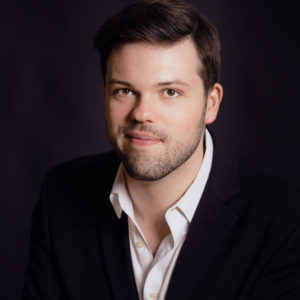 BASS-BARITONE – Eric McConnell
BASS-BARITONE – Eric McConnell
What is your favorite thing about being a bass-baritone?
My favorite thing about being a bass-baritone is the wide range of roles I get to play: heroes, goofballs, and, of course, villains. Growing up, my favorite character in every Disney film was always the villain. I don’t know what that says about me personally, but there is something very fun about getting to flex some evil muscles now and then. Plus, the villains almost always get the best music—in Disney films and in operas!
What is the biggest misconception about your voice type?
The biggest misconception of the bass-baritone voice is that it is simply a voice-type between bass and baritone. It’s very easy to draw that conclusion, but it’s not entirely accurate. When I think of my voice, I think of myself as a bass singer with good access to his high notes. Sometimes (but less frequently) the opposite is true—a bass-baritone may think of himself as a baritone with proficient access to his low notes. If I’m applying to a program or competition and there are two choices for voice-type, “bass” and “baritone,” I’ll always choose bass (and the majority of roles I sing fall under that classification as well). The term wasn’t even in consistent use until Wagner roles (Wotan in the Ring Cycle and the titular role in The Flying Dutchman) demanded it. However, once the term was out there, it was retroactively applied to roles like Mozart’s Figaro in The Marriage of Figaro and Leporello in Don Giovanni.
What are your top three dream roles and top three arias for your voice type?
ROLES:
- King Philip, Don Carlo by Verdi
- The Villains (Lindorf, Coppélius, Miracle, and Dappertutto) in Tales of Hoffmann by Offenbach
- Willy Wonka, The Golden Ticket by Peter Ash
ARIAS:
- King Philip’s “Ella giammai m’amò” from Don Carlo by Verdi
- Kaspar’s “Schweig damit dich niemand warnt!” from Der Freischütz by Weber
- Iago’s “Credo in un Dio crudel” from Otello by Verdi
 BASS – Josh South
BASS – Josh South
What is your favorite thing about being a bass?
When I was a kid, I performed in tons of community theatre musicals. In grade school and high school, I was in all the auditioned choirs, plays, musicals, jazz concerts, you name it. At one audition somebody said, “you’re so lucky you’re a bass; there’s always a role for you.” I took a gander around the room of about 50 people, and noticed there were about 10 dudes there – half of them were tenors. Pretty good odds, I guess. Mix in a little bit of hard work and talent and those odds were improved for getting cast in a production. In opera, practically every show has multiple bass characters. Since I live for performing and being on stage, this is a great thing for me. Therefore, basses are the best voice type! (wink wink)
What is the biggest misconception about your voice type?
I often hear, “you’re too skinny to be a bass” and “aren’t opera singers supposed to be old and fat?” OK, real talk. I believe everybody has the same laryngeal functions, the same laryngeal muscles, and everyone has about the same break between the chest voice and their falsetto/head voice. A person’s weight, height, and good looking-ness have nothing to do with their voice type.
What are your top three dream roles and top three arias for your voice type?
ROLES:
- King Philip, Don Carlo by Verdi
- Sparafucile, Rigoletto by Verdi
- Ramfis, Aida by Verdi
ARIAS:
- King Philip’s “Ella giammai m’amò” from Don Carlo by Verdi
- Don Ruy Gomez de Silva’s “Infelice! e tuo credevi (Infin che un brando vindice)” from Ernani by Verdi
- Raimondo Bidebent’s “Dalle stanze ove Lucia” from Lucia di Lammermoor by Donizetti
Without a partner in crime, the singers simply can’t perform. That’s where a coach accompanist comes in! These collaborative musicians work with singers in order to produce the best performance possible. They are a vital part of every rehearsal and performance.
 COACH/COLLABORATIVE PIANIST – Tyler Tucker
COACH/COLLABORATIVE PIANIST – Tyler Tucker
What is the role for a coach/pianist? How do you work with singers?
The importance of being a coach/pianist lies in being available to help and support singers to best serve the music and themselves. The most enjoyable part of my job is really diving into the music with an artist and finding out what is hidden inside waiting to be brought out. I also enjoy discovering what the singer wants to highlight and bring to the music personally. Of course, working with artists at Opera Colorado, these singers are at a level where they already bring so much to the table. Many times, a coach is really a sounding board to listen to the overall picture and help to make all the parts fit together in the best service of the piece.
__________
Kelly Maxwell is Opera Colorado’s Multimedia Producer.

I’ve never understood what there is a contratenor voice needed.
If the librettist called for a man to sing a duet with a woman, why didn’t the composer write the notes for a tenor, baritone or bass? Why is the singer, onstage, dressed as a man, but his voice is like a woman’s?
Hi Robert,
Countertenors first came from an attempt to represent something that no longer exists, castrati. But, castrati were never supposed to sound female. It’s was a representation of the male voice at a sacred level.
Castrati were outlawed and for a time, that sound completely went away and some roles were then sung by tenors or sopranos. We began to see the countertenor voice in the 17th century in all-male sacred choirs who were trying to recapture the castrati sound. That sound then became something that opera composers wanted to incorporate into their scores, largely to capture an otherworldly character like Oberon in Britten’s Midsummer Night’s Dream or Philip Glass’s Akhnaten. The characters are not written to sound like a soprano or tenor. They are written to sound distinctively different.
Then you get to something like Massenet’s Cendrillon, where Le Prince Charmant (Prince Charming) was originally sung by a soprano against Cendrillon (Cinderella) who is a mezzo. Why do that? It’s a trouser role (pants role, breeches role). There is a long standing tradition in opera for both male and female singers to cross-dress and achieve elements with the voice that can’t be achieved by casting the role otherwise. (The Witch in Hansel and Gretel is a great example). Massenet loved the harmonies that female voices could achieve and it gave a younger, more youthful sound to the Prince. It’s also more melancholy and brooding, which are specific elements of the Prince’s character in this opera. It’s a characteristically French sound that he was trying to achieve. Today, that role can be sung by a tenor, but the composer wanted it sung by a soprano, so there are still some productions that honor that.
I have no musical training. Grew up believing that opera was a bunch of people screaming at each other 🙁
I hired a very, very talented assistant who was grossly underpaid (obviously, by me). Her one requirement was that we had to listen to opera every Tuesday! Yes, imagine my horror. So every Tuesday we listened to opera. She proceeded to educate me and I began to like it.
Later in life I found myself in Norfolk, VA. One of the best buildings in town was the Opera House. So I started going. I attended the before performance educational sessions to learn about the current performance.
Now in Denver, I heard about the Central City Opera. It is now a must do every summer (except this one).
I really enjoyed this article and look forward to more to come. Thank you for taking the opportunity to do this. Perhaps a book??
It looks as though an individual singer’s voice type is determined by the vocal range of which they are capable. How is that determined, by whom and communicated to the singer? How does a singer’s voice “color” with age?
Hi Don,
Here are some answers from Cherity Koepke, our Director of Education & Community Engagement:
There’s a big misconception that people can choose what voice type they are. While some may try, it’s not something that you can really choose. Your voice is your voice. You can work on it and sometimes extend your range a bit higher or lower, but a tenor can’t be a bass; a soprano can’t be a contralto. If they try, they’re not achieving their natural sound and in opera, that’s essential.
As we mature and grow up, our vocal cords and folds do too. Once we reach puberty, the voice that we thought we had begins to change. For men, that means, most of the time, that it gets lower and for women, most of the time, that means it gets higher. Singing voices are the same. Our singing voices don’t really reach maturity until well into middle age and it’s different for each person.
By the time we reach 18-22, our voices have stabilized enough and our cords and folds are mature enough that we can figure out what our range is and then determine what voice type we are. We work with people we trust, our teachers, coaches, etc. to figure out what fits us best. Over the next 5-10 years as we work, we begin to gain experience in roles and go even further into our specific voice types. For example, a soprano may start there and then figure out that their voice moves well and fits in coloratura repertoire. A mezzo might figure out that because they have a rich, fuller sound Verdi is a good fit. It’s a moving puzzle.
The term “color” of the voice really talks about the tones and nuances we can achieve emotionally through our singing. It’s the thing that makes each person sound different from the other singers that have the same voice type. As we age and gain experience, we’re capable of more colors. In terms of aging, what we see isn’t really color so much as it is a natural product of aging. Our cords and folds thin and stiffen. That means, voices, female or male, tend to lower with age. So, sopranos and tenors will have a shorter careers in terms of length while mezzos and basses may be able to sing longer. Again, it’s different for each person and there are lots of exceptions especially with singers to keep their voices in shape.
Thank you, Kelly! Enjoyed the descriptions of each vocal range made more relevant by the artists perspectives and favorite roles. Vocal ranges of iconic singers engaging as well.
Can a bass-baritone be “dramatic” or “lyric?” In that, in the former case, the voice is huge (“Wagnerian”) and can cut through a large orchestra; or in the latter case, the voice is lighter and “softer” than its dramatic counterpart? Or are those distinctions only specific to certain voice types, and not applied “across the board” to measure “volume?”
Hope that makes sense. I’m just curious on the author’s thoughts.
(NOTE: I’ve been told I’m a bass-baritone repeatedly over the years of my training, practice, and performance [since 2004, and I’m going to be 36 years old in mid-June 2022], though with a tessitura between the F at the bottom of the F-clef staff, and the G# above Middle-C. I can easily cut through the “wall of sound” of an orchestra [between 80 and 100 pieces] and chorus [between approximately 50 and 60 voices] combined, at fortissimo [FF] with my voice. Even was able to do so with a pipe organ at forte-fortissimo [FFF], though that took more effort and was just a one-time thing to see if I could do it, haha! Anyway, just curious.)
Hmmm, where then does Castrato fit into the hierarchy of operatic voices? Above Countertenor? Above Contralto?